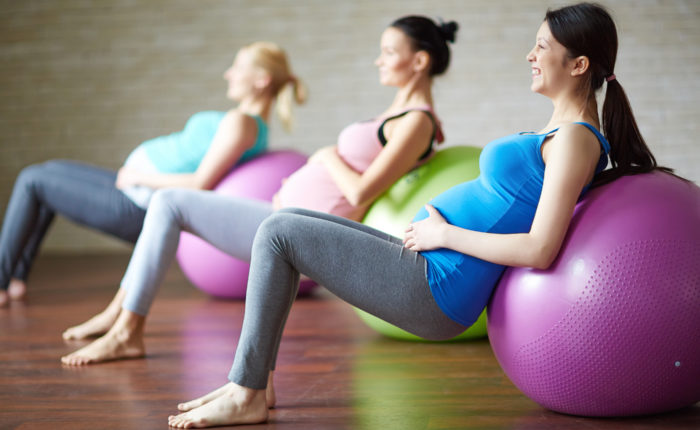In a recent Sports Medicine study, it was estimated that more than two thirds of pregnant women experience low back pain and nearly one-fifth experience pelvic pain. Pregnancy causes physiologic changes in the body, including increased weight gain, swelling of the hands and feet, muscle cramping, and mood swings due to hormonal changes. As a result of these changes, it is not uncommon for pregnant women to experience musculoskeletal injuries during the course of their pregnancy.
So, what can you do to prevent these injuries or if you’ve had an injury, and is it safe to seek treatment while you are pregnant?
The high rate of low back pain is likely due to the inability to recruit abdominal muscles and an exaggerated curvature of the lumbar spine. There is also an increase in a hormone called relaxin, which increases elasticity in the ligaments of the pelvis in preparation for birth. This hormone causes hyper-mobility or too much motion throughout all the joints of the body, not just the pelvis and lower back. Understanding this concept is important, but we also know that strong muscles help keep our joints more stable, and exercise (land based or water based) can help prevent these injuries.
Research states that both the mother and fetus can benefit from exercise. Some benefits include: improved cardiovascular function, decreased pregnancy weight gain, decreased joint and muscular discomfort, reduced incidence of muscle cramps and lower leg swelling, mood stability, decreased risk of developing gestational diabetes and gestational hypertension. Fetal exercise benefits include: decreased fat mass, improved stress tolerance, and advanced neurobehavioral maturation.
According to the American College of Obstetrics and Gynecology (ACOG), and the American Society for Obstetrics and Gynecology (ASOG), normally healthy pregnant women may continue an already-established exercise regimen.2 However, if you would like to start exercising and don’t have an established regimen, it would be best to consult with your MD and physical therapist prior to commencing a program to avoid injury.
As a physical therapist, I am 30 years old and currently 34 weeks into my pregnancy.
Although I did have a history of low back pain from two previous muscle strains (one at 16 and the other when I was 24), I was certain I would keep my back as strong as possible to make this pregnancy as smooth as possible. My goal was not only to prevent my back pain from re-occurring, but to keep myself strong and healthy for my baby and my patients. Unfortunately, towards the end of my first trimester, I strained my back while shifting my pillow during sleep one night. I attributed the strain from sleeping on my sides (as I am normally a back sleeper), a direct result of the pregnancy changes, as I had not had experienced a back episode in over 1 year. Luckily, I had a team of experts that I worked with that came to my rescue!
I began an 8-week rehabilitation program, coming in for physical therapy twice per week. My exercise regimen consisted of a number of exercises to strengthen the muscles in my pelvic floor, lumbar spine, and abdominals using a Pilates reformer. I worked my SOL Physical Therapist, who also incorporated manual therapy techniques to alleviate my back pain in the first 2 weeks. My home exercise program consisted of plie squats, bridges, kegel exercises, and hip circles to fatigue twice daily.
After just 3 weeks I began noticing a significant difference. And after 6 weeks, my back felt stronger and more stable. I continue to incorporate resistance exercise at least 2-3 times per week and walk 30-45 minutes, 4-5 times per week. A recent article explained that physical therapy tailored to the stage of pregnancy, significantly reduced evening pelvic pain and lumbo-pelvic pain.
I wanted to share my experience because sometimes injuries happen even if you are fit and strong.
Pregnancy causes the body to change in a variety of ways; however, pain doesn’t have to be part of the process. There is something you can do to prevent it and people that can help you along the way. Don’t just accept the pain and wait for it to go away after you’ve had your baby. Enjoy your pregnancy and look forward to the arrival of your baby with a healthy and strong body!
Resources:
Boulvain M, Kayser B, Melzer K, Schutz Y. Physical activity and pregnancy: cardiovascular adaptations, recommendations and pregnancy outcomes. Sports Med. 2010 Jun 1;40(6):493-507.
American College of Sports Medicine by Raul Artal, M.D., James F. Clapp, III, M.D., and Daniel V. Vigil, M.D., FACSM.
Liddle SD, Pennick V, Interventions for preventing and treating pelvic and back pain in pregnancy. Cochrane Database Syst Rev. 2013 Aug 1;8:CD001139.


